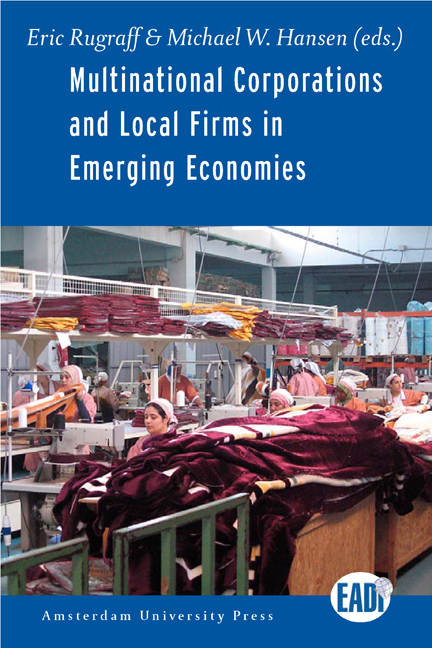5 - Mutual Productivity Spillovers and Regional Clusters in Eastern Europe: Some Empirical Evidence
Published online by Cambridge University Press: 19 January 2021
Summary
Introduction
It is widely accepted that foreign direct investment (FDI) is beneficial for the economic development of nations as it introduces fresh capital, new knowledge and the possibility for spillovers (technology, production, knowledge) for the host country. This has led to the wide support and progressive use of policies for the attraction of larger amounts of FDI. At the same time, the empirical literature on the likely impacts of FDI has been largely inconclusive for developing countries and transition economies (for example Aitken and Harrison, 1999; Javorcik, 2004). Some conditions that may affect the process, such as firms’ absorptive capacities or the relative technology gap, are traditionally taken into consideration in empirical analyses (see chapter 1). However, not enough emphasis has been put on the industrial environment in which local firms operate, in particular, whether the presence and strength of links with other firms may encourage or discourage spillovers. With the increasing importance given to regional clusters and cluster policies as a tool for local and regional development, the relation that these have with FDI is evident. Regional clusters, in fact, present an interesting case for the study of spillovers from foreign firms as their essential characteristics – industrial specialization, higher concentration of specialized labor skills and geographical proximity – could favor the spillover effect due to the potential role they have in attenuating the importance of large productivity gaps or low absorptive capacity.
The literature on FDI spillovers has been traditionally focused on the possibility that the spillover effect runs in only one direction – from the foreign to the local firms. This approach is grounded in the OLI (Ownership, Location, Internalization) paradigm (Dunning, 1977) according to which foreign firms own firm specific assets such as a higher level of technology which is likely to spill over on local firms through various channels (labor mobility, demonstration effect, vertical linkages). The motivations which could drive such behavior have been categorized by the International Business literature in market-seeking, resourceseeking and efficiency-seeking FDI (Dunning, 1993). There is a growing strand of literature focused on understanding a further type of motivation, the so-called asset-seeking (for example Fosfuri and Motta, 1999). In this case, the foreign firm is investing abroad in order to have access to resources not available in its home country rather than to exploit an advantage that it already possesses.
- Type
- Chapter
- Information
- Multinational Corporations and Local Firms in Emerging Economies , pp. 123 - 152Publisher: Amsterdam University PressPrint publication year: 2011
- 1
- Cited by

